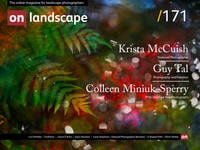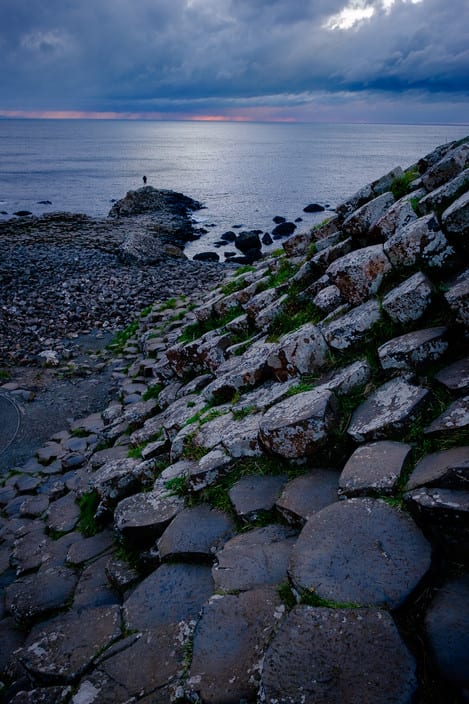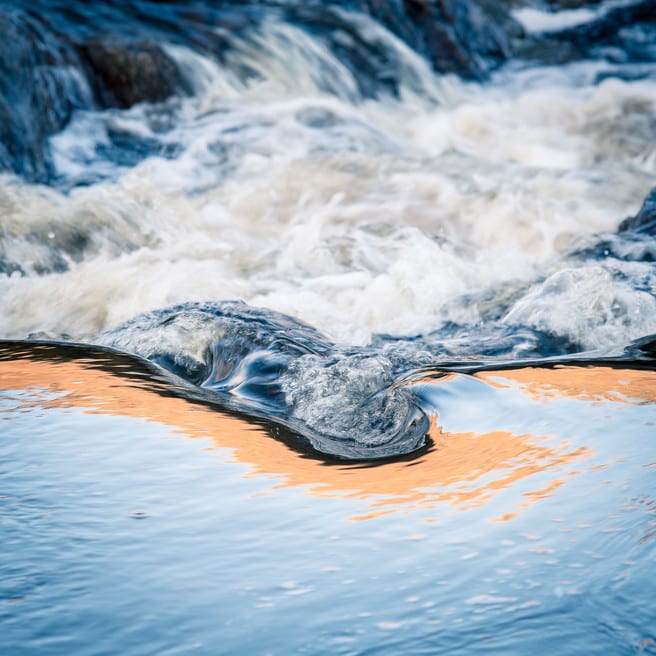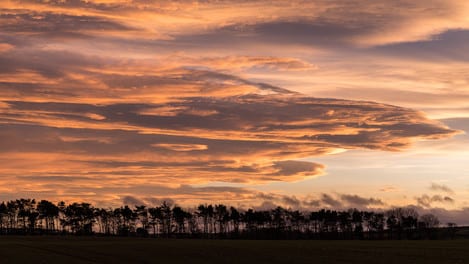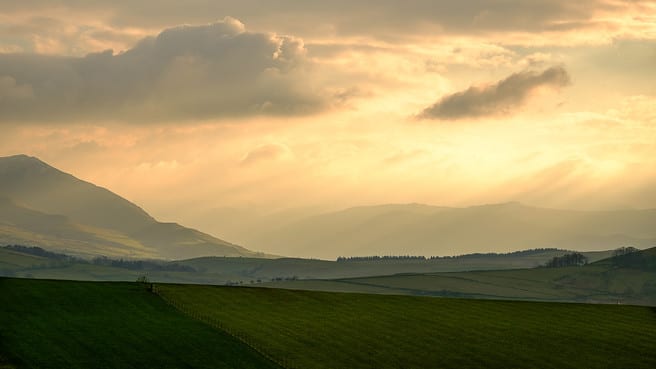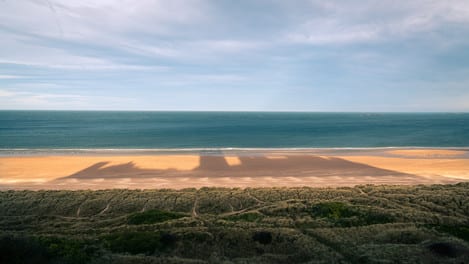A contrary view, in reply to the Togcast episode #42

Arjun Nambiar
A surgeon based in the north-east, who moonlights (twilights? almost-any-lights?) as a photographer. Being a surgeon by profession requires constant attention to detail and technical proficiency that can be attained only through disciplined practice - qualities that will undoubtedly appear very familiar to readers of this esteemed publication!
I was recently listening to an episode of the Togcast (click here) - a photography podcast by UK duo Sam Gregory and Paul Sanders, for those of you who are unfamiliar. Their interviews are almost always insightful, informative and fun, and I generally try to listen in fairly soon after new episodes come out. So it was that I was listening to the recent episode where Paul had roles reversed, and was being interviewed by none other than Charlie Waite.
As always it was a thoroughly enjoyable interview, and I was astounded to learn just how many images Paul would have to go through on a daily basis when he was picture editor of the Times (I won't spoil it for those who haven’t heard this episode yet!) If you haven’t listened to this or any other episodes of the Togcast I would highly recommend it.
It was one particular topic that really caught my attention, however, to the extent of making me reach for keyboard and tablet to give substance to my own opinion, which I have to admit is a rare occurrence these days. Both Paul and Charlie seemed to wholeheartedly agree that the print is the culmination of the photographic process.
To the extent that it was even suggested “seeing your work printed is the only thing that makes you a photographer”, and “if you’ve got a print then that makes you a real photographer”. Bold words indeed! Of course, this is hardly the first time I, or indeed you, surely, have heard words along those lines. But this time it bothered me slightly because here were two eminent, respected and well-known photographers saying that unless you print your work then somehow you are not achieving your full photographic potential, even that you are not a ‘real photographer’. Now before I go any further I would just like to add a necessary disclaimer - I do print my own work when an image passes muster. I love the whole process of printing, learning how to print and print well. It is as infectious, infuriating, expensive and involving as photography itself. And therein lie some of my qualms with messrs Waite and Sanders. Let me explain.
Printing is an art in itself
My first argument is that printing is an art in itself, and like any art, it is not necessarily for everyone. The reasons for this are myriad. Some people may not be interested in learning about a whole new process - and it is a complex process - involving colour management, calibration, proofing, ink types, paper types, and the rest of it. Nothing wrong with that. But does that mean they are somehow achieving less?
Well, you might say, then at least they should get their images printed professionally. Sure, that is an option, but by and large, the output from sending your digital files off to a lab for printing is not always as you expect or intend, again due to mismatches in colour calibration and profiling, among other things. My argument is not so much about printing yourself versus getting someone else to print for you. Indeed, I would say that if you are going to print, take the time to learn to do it yourself.
A digital presentation is a perfectly legitimate form
My argument against printing is, in fact, not against printing at all. It is against everyone printing or feeling that must print. A digital presentation is a perfectly legitimate form of showing an image if that was the intent. Some images were taken with the sole intent of being presented on social media, and that's fine. There is no way I want to see the vast majority of those in print! But more than that, even some highly considered and crafted photography is sometimes created with the intent of being presented digitally. When they are also processed with that intent then why should these images be considered any less 'finished' than if they were output as a print?
Are you somehow less engaged by seeing some of your favourite photographers work on Twitter rather than in an exhibition? Have you truly not ‘seen’ their work if you have not been to the aforementioned exhibition (which, by the way, may never have existed for you to visit in the first place)? Going forwards I think the digital presentation of fine artwork is going to become more mainstream and processing for this medium is inevitably going to involve some thought and skill as well, so why should it be any less valid as an output process?
And what of competitions?
Dare I even start on this contentious topic?! As the venerable editor of this publication quite correctly pointed out to me recently, entries for the major photography competitions these days are, in the first round at least, judged on the digital file. So if we are not judging a photographers ‘real work’, then can it be a true and valid assessment? I’ll let that one fester.
The other issue is environmental
Getting everyone to print is probably not any good for the health of the planet. Photographic paper is not cheap to produce in terms of resources, and certainly, printing ink is one of the most expensive commodities (by weight or volume) in the world. As landscape photographers, I am sure most of us are looking to minimise our environmental impact, and as such it is sometimes difficult to reconcile our love of expensive and resource-heavy equipment and paraphernalia with our obvious regard for nature. Reams of photographic paper being bought, and consequentially - let's not kid ourselves - a lot of it being wasted is not exactly being green. Sorry, Fotospeed!
When prominent photographers suggest that printing is the ultimate final end-point of the photographic journey, it invariably results in countless unsuspecting (and blameless) individuals going out to buy the latest Epson or Canon photo printer (plus the aforementioned reams of paper), at no small cost to themselves, with the well-meaning intention of printing purely their best work (and when they see the price of Epson Ultrachrome HD ink, only the best of the best!) They then quickly discover that if they don’t print anything on their high-tech new printer for a few weeks the ink heads get clogged up and need to be cleaned (at best) resulting in further wasted ink, or (at worst) expensive repairs!
Printing is not for everyone, and neither should it be. If you are willing to spend the time and effort (and expense) to learn how to do it well, then I can tell you from personal experience that it is a very rewarding process. But do not be put off by suggestions that without it your photographic journey is somehow unfulfilled, coz it just ain't so! For those of you who do take the plunge, all I can say is do your research beforehand - perhaps go on a one-day printing workshop - and then enjoy the journey!
Some things to consider before deciding if you want to learn to print your own work
- It is expensive. A good quality photo printer will set you back anywhere between £400 to £1000+ and that is just with a set of starter inks (the ink cartridges that come with the printer are usually of smaller volume than the standard set you will buy later). If you want an idea of expenditure for ink, a single cartridge of Epson Ultrachrome HD ink for the SC-P600 is around £20, give or take. That printer takes 9 cartridges, so do the math! Yes, there are ways of getting it done cheaper, but for a beginner, this is where it would start. You would also need to invest in a calibration tool for your monitor (which, to be honest, you should probably do anyway if you process digitally) and a few boxes of test packs of different types of paper to see which ones suit your type of imagery.
- Print heads clog up if they are not used for more than 4-6 weeks (varies slightly based on the model). Again, there are ways of mitigating this but basically, if you are not going to be printing at least a couple of images every 4-6 weeks you are running a significant risk of having clogged print heads, which at best leads to ink wastage when cleaning, or at worst having to get it repaired or replaced.
- Learning Curve. There is quite a learning curve when it comes to all the different aspects of creating a high quality print, so don't expect to become an expert in a few days or even a few months!
- Recycling print cartridges. Print cartridges should be recycled, don’t just chuck them in the garbage. You generally can't put them in your household recycling bin either.
- Good quality home photographic printers are not small! If you are expecting something the size of your office 3-in-1, think again! The Epson SC-P600 is a hefty and sizeable thing by any standards, and the Canon Prograf 1000 is an absolute beast! If you don’t plan for some table-top real estate to put your new printer, you could be in for some grief when it arrives on your doorstep.
- Making proof copies before the final print is the norm. So if you don't like the thought of wasting precious ink, think twice! One of the advantages of getting a lab to print your work is that they usually perform all these quality control steps, and hence absorb the cost of waste. Of course, that is reflected in their prices.
Do you have an idea for an article or a discussion you'd want to share with the On Landscape community? Get in touch with us to discuss it further!

